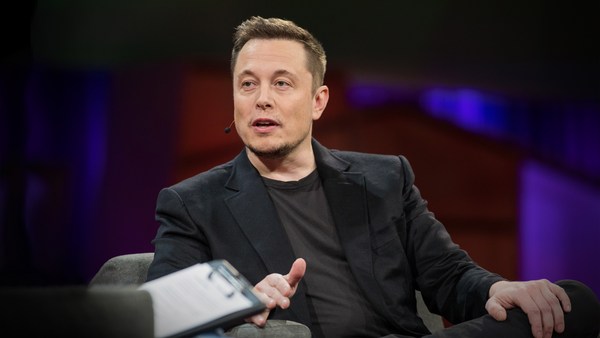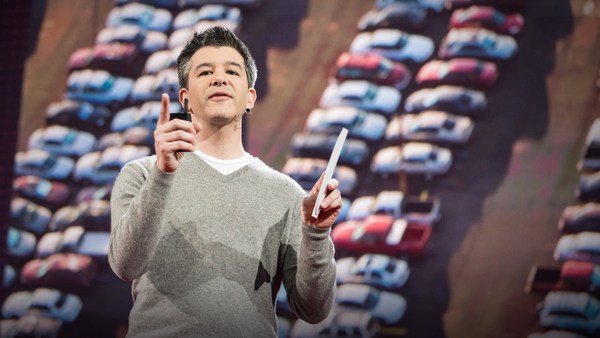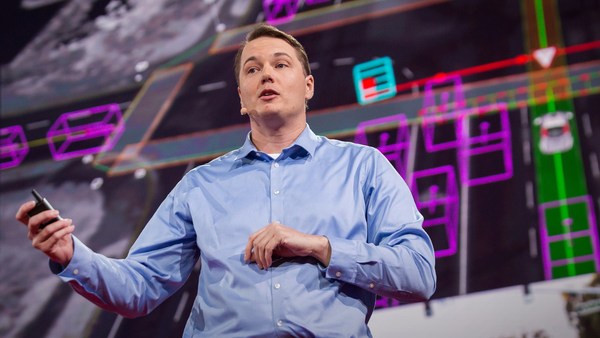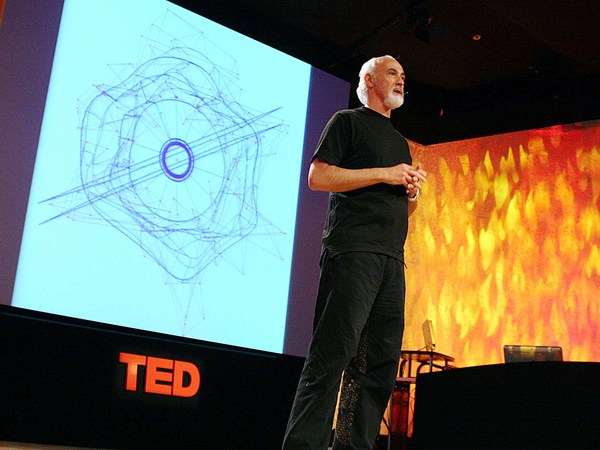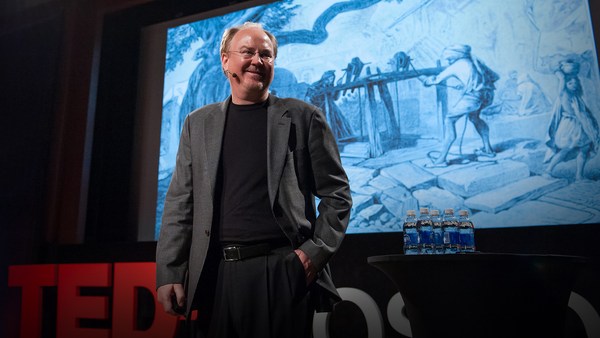People love their automobiles. They allow us to go where we want to when we want to. They're a form of entertainment, they're a form of art, a pride of ownership. Songs are written about cars. Prince wrote a great song: "Little Red Corvette." He didn't write "Little Red Laptop Computer" or "Little Red Dirt Devil." He wrote about a car. One of my favorites has always been: "Make Love to Your Man in a Chevy Van," because that was my vehicle when I was in college.
The fact is, when we do our market research around the world, we see there's a nearly universal aspiration on the part of people to own an automobile -- 750 million people in the world today own a car. And you say, boy, that's a lot. But you know what? That's just 12 percent of the population. We really have to ask the question: Can the world sustain that number of automobiles? And if you look at projections over the next 10 to 15 to 20 years, it looks like the world car park could grow to on the order of 1.1 billion vehicles. If you park those end to end and wrap them around the Earth, that would stretch around the Earth 125 times.
Now, we've made great progress with automobile technology over the last 100 years. Cars are dramatically cleaner, dramatically safer, more efficient and radically more affordable than they were 100 years ago. But the fact remains: the fundamental DNA of the automobile has stayed pretty much the same. If we were to reinvent the automobile today, rather than 100 years ago, knowing what we know about the issues associated with our product and about the technologies that exist today, what would we do?
We wanted something that was really affordable. The fuel cell looked great: one-tenth as many moving parts, a fuel-cell propulsion system as an internal combustion engine, and it emits just water. And we wanted to take advantage of Moore's Law with electronic controls and software, and we absolutely wanted our car to be connected. So we embarked upon the reinvention around an electrochemical engine, the fuel cell, and hydrogen as the energy carrier. First was Autonomy. Autonomy really set the vision for where we wanted to head. We embodied all of the key components of a fuel-cell propulsion system. We then had Autonomy drivable with Hy-Wire, and we showed Hy-Wire here at this conference last year. Hy-Wire is the world's first drivable fuel cell, and we have followed up that now with Sequel. And Sequel truly is a real car. So if we could run the video --
(Futuristic music)
[Reinventing the Automobile]
(Video) It truly is my great pleasure to introduce Sequel.
[Acceleration]
[Cruising]
[Steering]
[Braking]
But the real key question I'm sure that's on your mind: Where is the hydrogen going to come from? And secondly, when are these kinds of cars going to be available? So let me talk about hydrogen first. The beauty of hydrogen is it can come from so many different sources: it can come from fossil fuels, it can come from any way that you can create electricity, including renewables. And it can come from biofuels. And that's quite exciting. The vision here is to have each local community play to its natural strength in creating the hydrogen. A lot of hydrogen is produced today in the world. It's produced to get sulfur out of gasoline -- which I find is somewhat ironic. It's produced in the fertilizer industry; it's produced in the chemical manufacturing industry. That hydrogen is being made because there's a good business reason for its use. But it tells us that we know how to create it, we know how to create it cost-effectively, we know how to handle it safely.
We did an analysis where you would have a station in each city with each of the 100 largest cities in the United States, and located the stations so you'd be no more than two miles from a station at any time. We put one every 25 miles on the freeway, and it turns out that translates into about 12,000 stations. And at a million dollars each, that would be about 12 billion dollars. That's a lot of money. But if you built the Alaskan pipeline today, that's half of what the Alaskan pipeline would cost. But the real exciting vision that we see, truly, is home refueling, much like recharging your laptop or recharging your cell phone. So we're pretty excited about the future of hydrogen. We think it's a question of not whether, but a question of when.
What we've targeted for ourselves -- and we're making great progress toward this goal -- is to have a propulsion system based on hydrogen and fuel cells, designed and validated, that can go head-to-head with the internal combustion engine. We're talking about obsoleting the internal combustion engine, and doing it in terms of affordability at scale volumes, its performance and its durability. So that's what we're driving to for 2010. We haven't seen anything yet in our development work that says that isn't possible. We actually think the future is going to be event-driven. So since we can't predict the future, we want to spend a lot of our time trying to create that future.
I'm very, very intrigued by the fact that our cars and trucks sit idle 90 percent of the time: they're parked all around us. They're usually parked within 100 feet of the people that own them. Now, if you take the power-generating capability of an automobile and you compare that to the electric grid in the United States, it turns out that the power in four percent of the automobiles equals that of the electric grid of the US. That's a huge power-generating capability, a mobile power-generating capability. And hydrogen and fuel cells give us that opportunity to actually use our cars and trucks when they're parked to generate electricity for the grid.
We talked about swarm networks earlier. Talk about the ultimate swarm -- having all of the processors and all of the cars when they're sitting idle being part of a global grid for computing capability. We find that premise quite exciting. The automobile becomes, then, an appliance -- not in a commodity sense, but an appliance, mobile power, mobile platform for information and computing and communication, as well as a form of transportation.
And the key to all of this is to make it affordable, to make it exciting, to get it on a pathway where there's a way to make money doing it. And again, this is a pretty big march to take here. A lot of people say: How do you sleep at night when you're wrestling with a problem of that magnitude? I tell them I sleep like a baby: I wake up crying every two hours.
(Laughter)
Actually, the theme of this conference, I think, has hit on one of the major keys to pull that off, and that's relationships and working together. Thank you very much.
(Applause)
Chris Anderson: Larry, Larry -- wait, wait, wait. Larry, wait one sec. I've got so many questions I could ask you. I just want to ask one. You know, I could be wrong about this, but my sense is that in the public mind today, GM is not viewed as as serious about some of these environmental ideas as some of your Japanese competitors, maybe even as Ford. Are you serious about it, and not just, you know, when the consumers want it, when the regulators force us to do it, we will go there? Will you guys really try and show leadership on this?
Larry Burns: Absolutely. We're absolutely serious. We're into this over a billion dollars already, so I would hope people would think we're serious when we're spending that kind of money. And secondly, it's a fundamental business proposition. I'll be honest with you; we're into it for business growth opportunities. We can't grow our business unless we solve these problems. The growth of the auto industry will be capped by sustainability issues if we don't solve the problems. And there's a simple principle of strategy that says: Do unto yourself before others do unto you. If we can see this possible future, others can, too. And we want to be the first one to create it, Chris.
